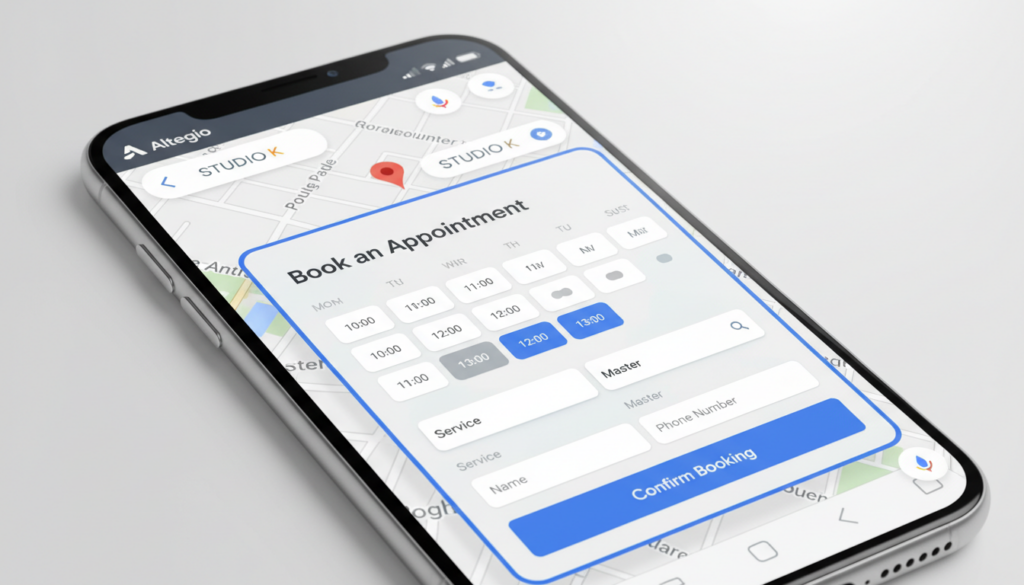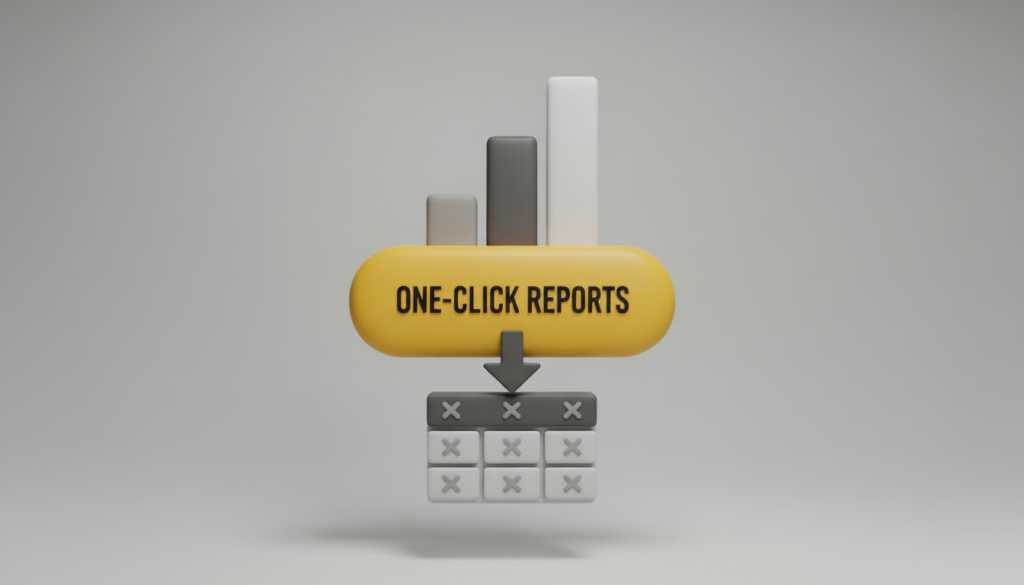In recent years, competition in the service industry and appointment-based businesses has intensified. Customers expect personalized experiences, flexible scheduling, and high-quality service all while businesses face rising costs and pressure to grow. In this environment, guessing no longer works. Managers must understand what drives loyalty, which services are most profitable, and where resources should be allocated. This is where CRM analytics makes the difference.
The global CRM market exceeded $60 billion in 2024 and continues to expand. The reason is simple: companies increasingly see data not just as a byproduct of operations but as a strategic asset. A salon or clinic may generate thousands of booking entries, payments, and customer interactions each month. Without analysis, this information remains unused. With analytics, it becomes the basis for growth strategies, cost optimization, and improved service delivery especially for appointment-based businesses, where every missed booking directly impacts revenue.
Platforms such as Altegio bring these opportunities within reach for businesses of any size. They allow managers to monitor bookings, revenue, customer loyalty, and staff performance in a single interface. As a result, companies gain clarity, make better decisions, and consistently improve sales performance.

What is CRM Analytics?
In simple terms, it is the systematic use of data from a CRM system to better understand customers and business processes. Unlike traditional reporting, which only describes what has happened, CRM analysis focuses on uncovering why it happened and what is likely to happen next.
When companies embrace CRM data analysis, they can answer questions such as:
- Which services generate the most revenue per client?
- What factors cause customers to cancel appointments?
- Which marketing campaigns bring back repeat visitors?
- How do seasonal changes affect demand?
This deeper understanding allows businesses to move from intuition-based decisions to data-driven strategies. According to research from McKinsey, companies that use advanced analytics for CRM improve their sales productivity by up to 20% and customer satisfaction by up to 10%. For Altegio users, these capabilities are embedded into the platform, making insights accessible without the need for specialized analysts.
CRM Data Analysis Essentials
The foundation of CRM data analysis lies in consistent processes for collecting, cleaning, and interpreting information. Data must be complete, reliable, and structured to deliver real value.
Key elements of CRM analysis
Segmentation is one of the most important steps. By grouping customers according to demographics, preferences, or spending behavior, service industry companies and appointment-based businesses can design tailored offers. A fitness studio might identify young professionals who prefer evening workouts, while a clinic might segment patients who visit for preventive care versus emergency treatments.
Behavioral insights also play a central role. Tracking how often customers book, how long they stay loyal, and which services they combine helps companies optimize packages and promotions. Sales pipeline monitoring ensures that managers understand conversion rates at each stage, from inquiry to repeat booking.
Finally, trend analysis and forecasting enable businesses to anticipate demand and allocate resources efficiently. A salon may increase staffing before the holiday season, while a training center may expand capacity in months when professional courses are in higher demand.
Data quality and accuracy
High-quality data is the backbone of any analytics initiative. According to Gartner, poor data quality costs businesses millions annually in lost opportunities and misinformed decisions. Duplicates, outdated records, and incomplete information distort reports.
Altegio addresses these challenges by automating customer record creation, synchronizing payment history, and updating loyalty balances in real time. This ensures that reports are not only accurate but also actionable, giving managers confidence in their decisions.
Analytics Tools
The tools used for analytics determine how effectively data can be turned into decisions. Advanced CRM analytics tools combine dashboards, customizable reports, and forecasting models. They allow managers to track sales performance, monitor staff productivity, and evaluate marketing results without leaving the CRM platform.
In Altegio, analytics CRM functionality is built directly into the system. Business owners can log in and instantly see revenue breakdowns, customer retention rates, or the performance of loyalty campaigns. Unlike spreadsheets, which require manual updates, these tools provide real-time insights, making them more reliable for fast decision-making.
Analytics for CRM and Business Decisions
The ultimate value of analytics for CRM lies in better decisions. Instead of relying on intuition, companies gain measurable insights into their operations. A clinic may discover that evening appointments are consistently overbooked, prompting the addition of extra staff. A fitness center may find that group classes retain customers longer than individual training, leading to adjustments in service offerings.
According to Salesforce, businesses that actively use CRM analytics report 34% higher customer retention and 37% faster decision-making. For appointment-based businesses in the service industry, this translates into fewer cancellations, higher utilization rates, and more predictable revenue streams.
CRM Analytics Examples
Several real-world CRM analytics examples highlight the impact of data-driven management:
- Beauty salon: Analysis showed that weekday mornings had low occupancy. A targeted SMS campaign offering discounts increased bookings by 22%.
- Fitness club: Data revealed that new members were most likely to cancel after the first month. A personalized onboarding program increased retention by 15%.
- Healthcare provider: CRM data analytics showed that automated reminders reduced no-shows by 40%. Implementing reminders in Altegio significantly improved attendance.
- Corporate training firm: Reports indicated that clients who booked one seminar often returned for related courses. Cross-selling strategies boosted lifetime value by 18%.
These examples prove that analytics is not abstract theory it delivers tangible improvements in revenue and customer loyalty.

Key Metrics in Analytics
To maximize the benefits of CRM analytics, companies must track the right KPIs. Common metrics include:
- Customer Lifetime Value (CLV) – the total revenue expected from one client over time.
- Customer Acquisition Cost (CAC) – the marketing and sales cost required to attract a new client.
- Churn rate – the percentage of customers who stop booking services.
- Net Promoter Score (NPS) – customer loyalty measured through willingness to recommend.
- Conversion rate – the proportion of leads who become paying clients.
- Average Revenue per User (ARPU) – total revenue divided by the number of active customers.
By monitoring these metrics in Altegio dashboards, businesses can evaluate whether strategies are effective and adapt quickly to changes in customer behavior.
Integrating with Other Systems
Isolated analysis has limited value. The true strength of CRM data analysis emerges when it is integrated with other systems. Connecting CRM to marketing automation tools allows companies to measure campaign ROI. Linking with payment platforms ensures that revenue data matches customer activity. Integrating customer support systems provides insight into service quality and satisfaction.
Altegio supports integrations that bring these elements together, giving managers a complete view of the customer journey from first booking to repeat visits. This holistic perspective allows businesses to design strategies that are both customer-centric and profitable.
Best Practices in CRM Data Analytics
Companies that excel at CRM data analytics share several best practices. They set clear goals for analysis, ensuring that every report supports a decision. They invest in employee training so staff can interpret insights. They automate follow-ups so that data does not remain theoretical but leads to concrete actions. And they continuously review reports to adapt to shifting market conditions.
For example, a salon may set a goal to reduce cancellations by 10%. By tracking cancellation rates weekly and testing different reminder messages, managers can achieve and even surpass this target. A clinic may aim to increase revenue per patient by introducing bundled offers. By monitoring acceptance rates, it can fine-tune packages and maximize profitability.
Conclusion: Using Analytics CRM for Growth
The path to sustainable growth lies in evidence-based decision-making. CRM analytics transforms scattered customer data into insights that drive action. Businesses that adopt CRM are able to increase sales, reduce churn, and create personalized customer experiences.
Altegio makes these capabilities accessible to appointment-based businesses and service companies of all sizes. With real-time dashboards, segmentation tools, and forecasting features, it enables managers to run their businesses more efficiently and profitably.
In the long run, companies that embrace analytics not only achieve higher revenue but also build stronger, trust-based relationships with customers. Growth becomes measurable, repeatable, and scalable the foundation of long-term success.




